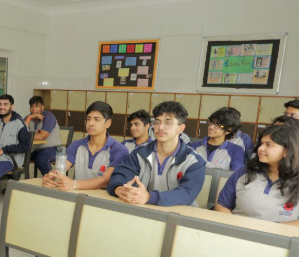Education is increasingly shifting toward student-centered innovation models that prioritize active learning, personal growth, and real-world problem-solving. These models empower learners to take ownership of their education by promoting choice, voice, and collaboration. As schools embrace these innovative frameworks, they are reimagining how students engage with content, demonstrate understanding, and develop critical life skills.
1. What Are Student-Centered Innovation Models?
Student-centered innovation models are educational approaches that place the learner at the core of the instructional process. They emphasize personalized learning paths, inquiry-based projects, and collaborative environments where students help shape their learning experiences.
2. Key Principles of Student-Centered Innovation
- Voice and Choice: Students have a say in what and how they learn, promoting autonomy and engagement.
- Inquiry and Exploration: Learning is driven by questions, curiosity, and hands-on investigation.
- Real-World Relevance: Projects and tasks connect to real-life problems, making learning more meaningful.
- Collaboration and Communication: Group work and discussion build teamwork and interpersonal skills.
- Reflection and Feedback: Continuous self-assessment and constructive input help guide learning and improvement.
3. Examples of Student-Centered Innovation Models
- Project-Based Learning (PBL): Students investigate complex topics and present solutions through multidisciplinary projects.
- Design Thinking in Education: Learners engage in a structured process to empathize, define, ideate, prototype, and test solutions to problems.
- Competency-Based Education: Students progress based on mastery of skills rather than seat time.
- Genius Hour: Allocated time for students to explore topics they are passionate about.
- Flipped Classrooms: Instruction happens outside of class, allowing for active, collaborative learning during school hours.
4. Benefits for Students and Educators
Student-centered innovation models foster deeper engagement, intrinsic motivation, and a sense of purpose. Students develop critical thinking, adaptability, and creativity—skills essential for success in a rapidly changing world. Educators benefit from more dynamic and responsive classrooms where teaching is tailored to student needs.
5. Implementation Considerations
Successful implementation requires:
- Professional Development: Teachers need training to design flexible, student-driven learning environments.
- Flexible Curriculum: Schools must support interdisciplinary and personalized approaches.
- Assessment Redesign: Traditional testing is replaced or supplemented with performance-based evaluations.
- Equity and Inclusion: All students must have access to resources and opportunities to thrive in these models.
Conclusion
Student-centered innovation models are transforming education into a more personalized, relevant, and empowering experience. By focusing on student agency, collaboration, and real-world connections, these models help learners develop both academic and life skills. As more schools adopt these approaches, they pave the way for a future-ready education system that supports every student’s unique potential.














